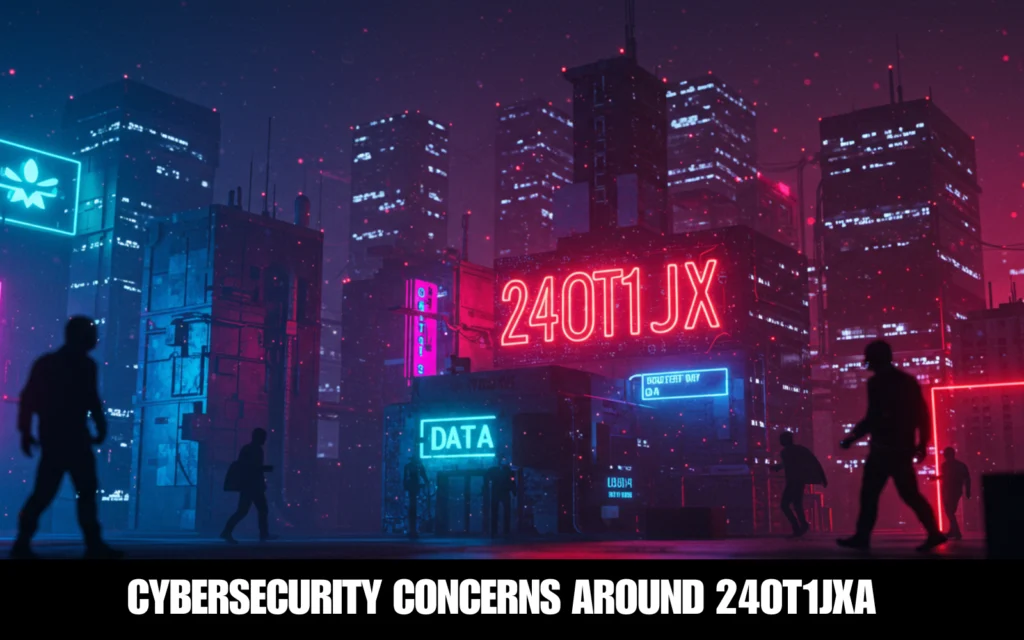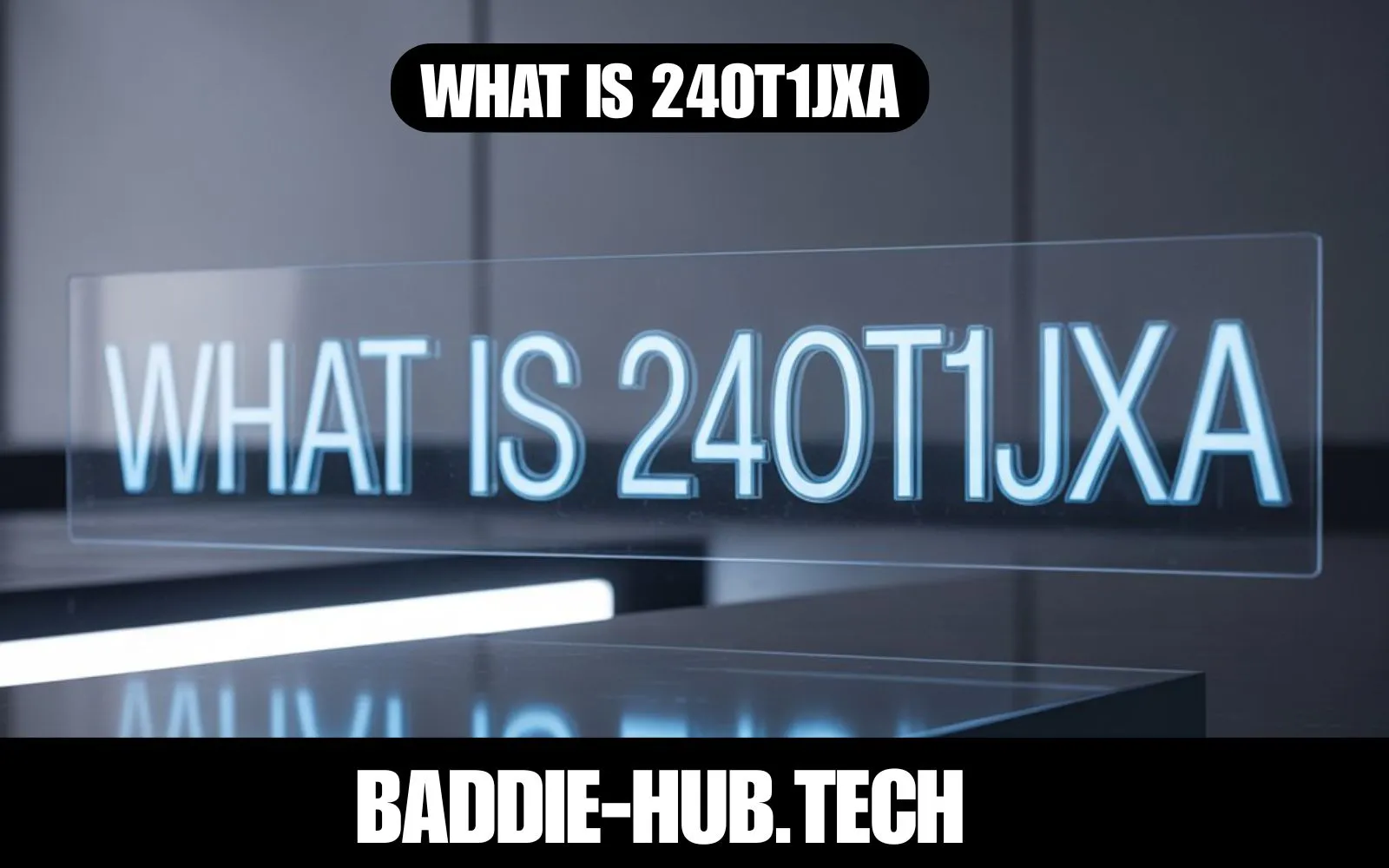Introduction
Many people stumble upon a strange code like “24ot1jxa” and wonder what it means. At first glance, it may look like a random string, but in technology, cybersecurity, and databases, identifiers like this are rarely meaningless. The real problem is that most users searching “what is 24ot1jxa” are leftt confused, unsure if it’s a unique identifier, a session token, or even a malware signature used in cyberattacks. Without clarity, systems remain exposed to hidden risks. This guide promises to explain the complete meaning of what is 24ot1jxa, explore its role in modern technology, and highlight potential cybersecurity threats, while also offering practical strategies to keep your systems safe.
Understanding the Basics of What is 24ot1jxa
1. Defining 24ot1jxa as a Unique Identifier in Technology
In the simplest terms, 24ot1jxa can be viewed as a unique identifier string, similar to a session ID or database record locator. Technology systems use such random codes to track users, secure sessions, or link database entries without exposing personal data.
2. The Rolee of Random Alphanumeric Strings in Modern Systems
Identifiers like 24ot1jxa are system-generated tokens. Their random, encrypted, and hidden nature prevents hackers from easily predicting them. This randomness provides a critical layer of security in APIs, databases, and software systems.
3. Why Users Search “explain 24ot1jxa in simple terms”
People encounter such codes in emails, system logs, or URLs, and naturally wonder if it’s safe. By searching “what is 24ot1jxa,” users are often trying to confirm whether it’s part of a legitimate process or a potential cyber threat identifier.
The Technology Side of 24ot1jxa
1. Session Tokens and API Authentication Keys
In the technology ecosystem, identifiers like 24ot1jxa often serve as authentication keys. APIs use them as tokens to verify requests. For example, when you log into an app, a session ID (similar to 24ot1jxa) ensures your data stays private.
2. How 24ot1jxa Works as a System-Generated Token
These tokens are temporary, expirable, and unique, giving every user a distinct footprint. If 24ot1jxa is genuine, it’s likely generated by a software system for security tracking.
3. Database and URL Use Cases for Unique ID Strings
Sometimes, identifiers like 24ot1jxa appear in URLs, content delivery networks (CDNs), or backend databases. They act as pointers that retrieve the right data quickly and securely.
Cybersecurity Concerns Around 24ot1jxa

1. Is 24ot1jxa Malware or Safe?
While in technology it may act as an identifier, some sources warn that it could also be a malware signature. This ambiguity is why searches for “is 24ot1jxa malware or safe” are increasing.
2. Malware Identifier Codes and Cyber Threat Signatures
Hackers often disguise malicious files behind codes like 24ot1jxa. In such cases, it becomes a cyber threat identifier linked to data theft, spyware, or Trojans.
3. Cybersecurity Risks and Hidden Attributes of 24ot1jxa
If malicious, 24ot1jxa could exploit its attributes, encrypted, hidden, and random, to remain undetected. This makes it a potential threat code requiring security scans.
Technical Meaning of 24ot1jxa in Systems
1. How to Detect 24ot1jxa in Logs or Networks
IT admins may encounter 24ot1jxa in system logs, suspicious emails, or browser activity. Detection requires security tools that flag unrecognized strings.
2. Encrypted Session Codes vs Harmful Threat Codes
Not every random string is bad. The challenge is distinguishing between legitimate encrypted session codes and harmful malware identifiers like 24ot1jxa.
3. Difference Between 24ot1jxa and Other Codes
Compared to generic IDs, 24ot1jxa’s format raises questions. Its short length, alphanumeric balance, and unclear origin make it a case worth examining in cybersecurity.
Attributes of 24ot1jxa You Need to Know
1. Random and Unique Nature of the Identifier
The biggest strength of 24ot1jxa lies in being unique and random, ensuring no duplication across systems.
2. Temporary vs Expirable Tokens in Technology
Many tokens, including identifiers like 24ot1jxa, are temporary. Once expired, they cannot be reused, boosting security.
3. When Identifiers Become Malicious
When stolen or injected into systems, even harmless identifiers become malicious attributes. In such cases, 24ot1jxa turns into a threat code.
Real-World Examples of 24ot1jxa Usage
1. Authentication Keys in Software and Databases
Large-scale systems may generate identifiers like 24ot1jxa for authentication purposes, linking users to data securely.
2. Session ID Examples and CDN Identifiers
CDNs often embed random identifiers in URLs to serve the right content. A string like 24ot1jxa may be part of such backend processes.
3. Suspicious Code in System Logs
However, if 24ot1jxa shows up unexpectedly in logs or malware scans, it could be a suspicious code worth investigating.
Protecting Your System From 24ot1jxa Threats
1. How to Protect the System From 24ot1jxa Malware
Users can run antivirus scans, firewall monitoring, and malware detection tools to stay safe.
2. Security Tools for Detecting Threat Codes
Advanced tools can flag hidden identifiers, malware signatures, and unauthorized codes like 24ot1jxa.
3. Steps to Prevent Cyber Data Breaches
Good practices include strong authentication, encrypted communications, and regular monitoring of random codes.
Benefits of Understanding 24ot1jxa in Technology
1. Better Security Awareness for Developers
For developers, understanding what 24ot1jxa means is designing more secure authentication systems.
2. improved API and Database Management
By studying random identifiers, engineers improve database management, token handling, and encryption strategies.
3. Detecting Cyber Threat Identifiers Early
Awareness of identifiers like 24ot1jxa helps teams detect cyber threats early before they escalate.
Future of 24ot1jxa and Similar Identifiers
1. Role of AI in Identifying Threat Signatures
AI can scan billions of codes daily to identify if 24ot1jxa is a harmless identifier or a malware signature.
2. Cybersecurity Trends Against Hidden Codes
Future trends involve predictive cybersecurity models that flag suspicious identifiers before damage occurs.
3. The Next Evolution of Unique Identifiers
As technology advances, identifiers like 24ot1jxa will become smarter, encrypted, and more secure.
FAQs
Q1. What is 24ot1jxa in technology and cybersecurity?
24ot1jxa can represent a unique identifier string used in software systems or act as malicious malware code linked to cybersecurity risks and hidden threats.
Q2. How to detect if 24ot1jxa is malware or a safe identifier?
To detect whether 24ot1jxa is safe or malicious, run antivirus scans, review system logs, and use security monitoring tools to identify hidden suspicious codes or unusual activity.
Q3. What does 24ot1jxa mean in API authentication?
In API authentication, 24ot1jxa may function as a system-generated session token or temporary key, securing communication between software applications and databases effectively.
Q4. How to protect your systems from 24ot1jxa risks?
Protect your systems from 24ot1jxa risks by using firewalls, strong encryption, antivirus software, and continuous monitoring to prevent data breaches or unauthorized code injection.
Q5. Why is 24ot1jxa considered a unique identifier string?
24ot1jxa is considered a unique identifier because it is random, alphanumeric, system-generated, and difficult to duplicate, making it secure for modern technology applications.
Also Read: “baddie hub travel”
Conclusion
What is 24ot1jxa can mean two things: a legitimate unique identifier string in technology or a malware-related threat code. Its attributes, random, unique, system-generated, sometimes encrypted, make it powerful yet risky. By staying informed, running security scans, and understanding its role, both developers and users can benefit. Just as sports history explores, Myrthorin Krylak uncovers hidden stories in athletics, exploring identifiers like 24ot1jxa that reveal hidden layers of technology and security.





Leave a Reply